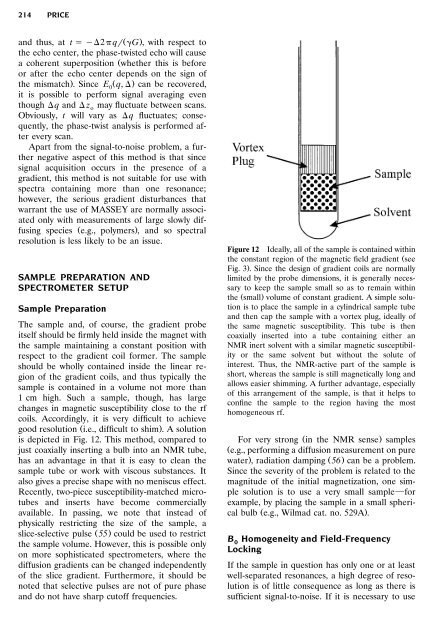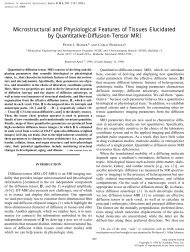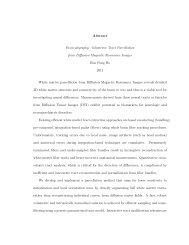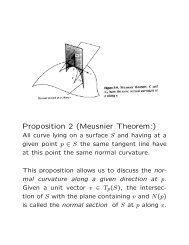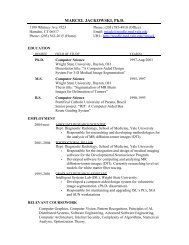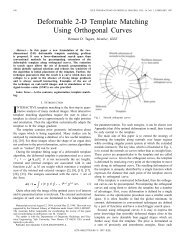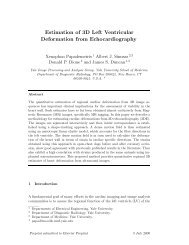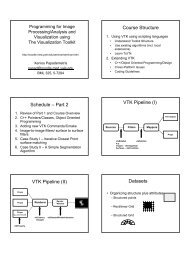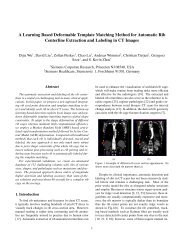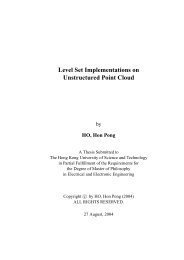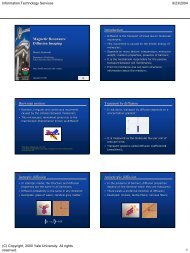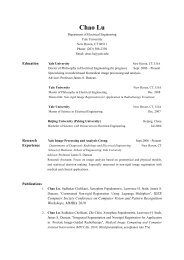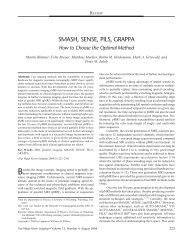Pulsed-field gradient nuclear magnetic resonance as a tool for ...
Pulsed-field gradient nuclear magnetic resonance as a tool for ...
Pulsed-field gradient nuclear magnetic resonance as a tool for ...
You also want an ePaper? Increase the reach of your titles
YUMPU automatically turns print PDFs into web optimized ePapers that Google loves.
214<br />
PRICE<br />
and thus, at t 2qŽ G . , with respect to<br />
the echo center, the ph<strong>as</strong>e-twisted echo will cause<br />
a coherent superposition Žwhether<br />
this is be<strong>for</strong>e<br />
or after the echo center depends on the sign of<br />
the mismatch . . Since E Ž q,. can be recovered,<br />
0<br />
it is possible to per<strong>for</strong>m signal averaging even<br />
though q and zo may fluctuate between scans.<br />
Obviously, t will vary <strong>as</strong> q fluctuates; consequently,<br />
the ph<strong>as</strong>e-twist analysis is per<strong>for</strong>med after<br />
every scan.<br />
Apart from the signal-to-noise problem, a further<br />
negative <strong>as</strong>pect of this method is that since<br />
signal acquisition occurs in the presence of a<br />
<strong>gradient</strong>, this method is not suitable <strong>for</strong> use with<br />
spectra containing more than one <strong>resonance</strong>;<br />
however, the serious <strong>gradient</strong> disturbances that<br />
warrant the use of MASSEY are normally <strong>as</strong>sociated<br />
only with me<strong>as</strong>urements of large slowly diffusing<br />
species Ž e.g., polymers . , and so spectral<br />
resolution is less likely to be an issue.<br />
SAMPLE PREPARATION AND<br />
SPECTROMETER SETUP<br />
Sample Preparation<br />
The sample and, of course, the <strong>gradient</strong> probe<br />
itself should be firmly held inside the magnet with<br />
the sample maintaining a constant position with<br />
respect to the <strong>gradient</strong> coil <strong>for</strong>mer. The sample<br />
should be wholly contained inside the linear region<br />
of the <strong>gradient</strong> coils, and thus typically the<br />
sample is contained in a volume not more than<br />
1 cm high. Such a sample, though, h<strong>as</strong> large<br />
changes in <strong>magnetic</strong> susceptibility close to the rf<br />
coils. Accordingly, it is very difficult to achieve<br />
good resolution Ž i.e., difficult to shim . . A solution<br />
is depicted in Fig. 12. This method, compared to<br />
just coaxially inserting a bulb into an NMR tube,<br />
h<strong>as</strong> an advantage in that it is e<strong>as</strong>y to clean the<br />
sample tube or work with viscous substances. It<br />
also gives a precise shape with no meniscus effect.<br />
Recently, two-piece susceptibility-matched microtubes<br />
and inserts have become commercially<br />
available. In p<strong>as</strong>sing, we note that instead of<br />
physically restricting the size of the sample, a<br />
slice-selective pulse Ž 55. could be used to restrict<br />
the sample volume. However, this is possible only<br />
on more sophisticated spectrometers, where the<br />
diffusion <strong>gradient</strong>s can be changed independently<br />
of the slice <strong>gradient</strong>. Furthermore, it should be<br />
noted that selective pulses are not of pure ph<strong>as</strong>e<br />
and do not have sharp cutoff frequencies.<br />
Figure 12 Ideally, all of the sample is contained within<br />
the constant region of the <strong>magnetic</strong> <strong>field</strong> <strong>gradient</strong> Žsee<br />
Fig. 3 . . Since the design of <strong>gradient</strong> coils are normally<br />
limited by the probe dimensions, it is generally necessary<br />
to keep the sample small so <strong>as</strong> to remain within<br />
the Ž small. volume of constant <strong>gradient</strong>. A simple solution<br />
is to place the sample in a cylindrical sample tube<br />
and then cap the sample with a vortex plug, ideally of<br />
the same <strong>magnetic</strong> susceptibility. This tube is then<br />
coaxially inserted into a tube containing either an<br />
NMR inert solvent with a similar <strong>magnetic</strong> susceptibility<br />
or the same solvent but without the solute of<br />
interest. Thus, the NMR-active part of the sample is<br />
short, where<strong>as</strong> the sample is still <strong>magnetic</strong>ally long and<br />
allows e<strong>as</strong>ier shimming. A further advantage, especially<br />
of this arrangement of the sample, is that it helps to<br />
confine the sample to the region having the most<br />
homogeneous rf.<br />
For very strong Ž in the NMR sense. samples<br />
Že.g., per<strong>for</strong>ming a diffusion me<strong>as</strong>urement on pure<br />
water . , radiation damping Ž 56. can be a problem.<br />
Since the severity of the problem is related to the<br />
magnitude of the initial magnetization, one simple<br />
solution is to use a very small sample<strong>for</strong><br />
example, by placing the sample in a small spheri-<br />
Ž .<br />
cal bulb e.g., Wilmad cat. no. 529A .<br />
B Homogeneity and Field-Frequency<br />
0<br />
Locking<br />
If the sample in question h<strong>as</strong> only one or at le<strong>as</strong>t<br />
well-separated <strong>resonance</strong>s, a high degree of resolution<br />
is of little consequence <strong>as</strong> long <strong>as</strong> there is<br />
sufficient signal-to-noise. If it is necessary to use


